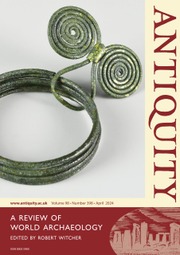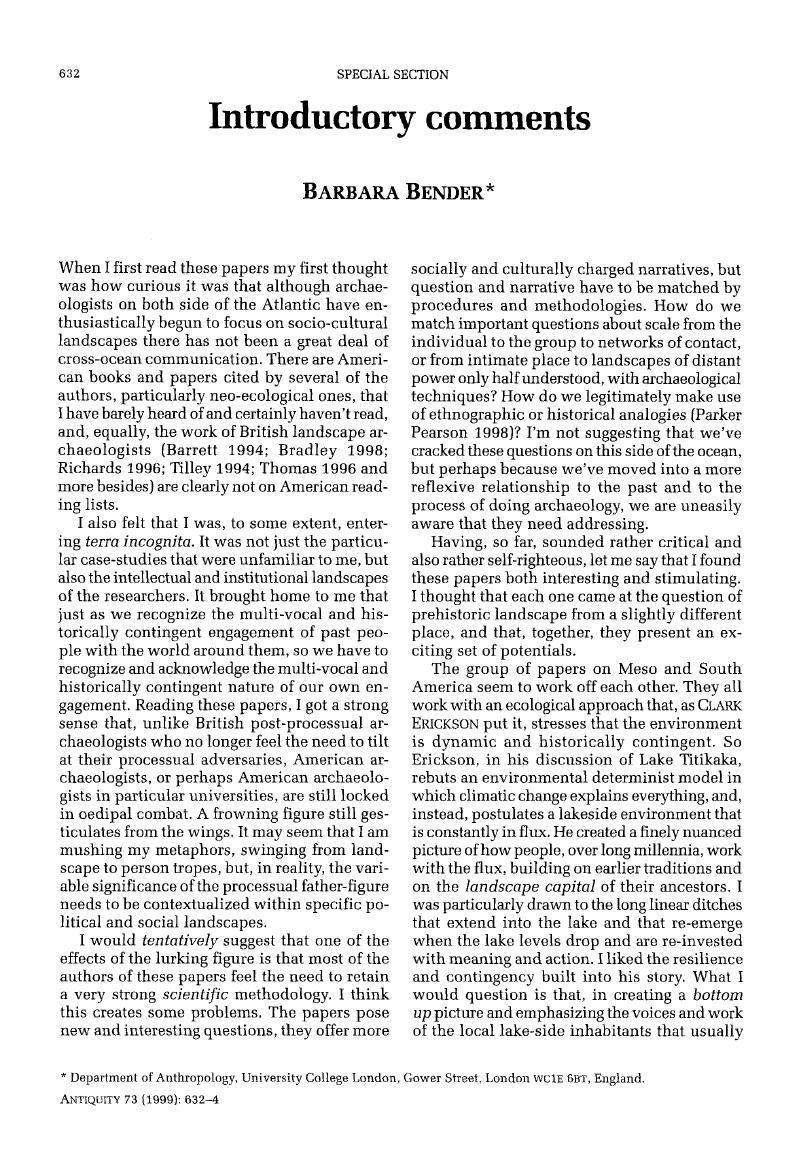Crossref Citations
This article has been cited by the following publications. This list is generated based on data provided by Crossref.
DeMarrais, Elizabeth
2002.
ANTIQUITY and the New World.
Antiquity,
Vol. 76,
Issue. 294,
p.
1089.
Ashmore, Wendy
2002.
"Decisions and Dispositions": Socializing Spatial Archaeology.
American Anthropologist,
Vol. 104,
Issue. 4,
p.
1172.
Janusek, John Wayne
and
Kolata, Alan L.
2004.
Top-down or bottom-up: rural settlement and raised field agriculture in the Lake Titicaca Basin, Bolivia.
Journal of Anthropological Archaeology,
Vol. 23,
Issue. 4,
p.
404.
Clarke, Catherine
2004.
The politics of storytelling: electronic media in archaeological interpretation and education.
World Archaeology,
Vol. 36,
Issue. 2,
p.
275.
Harris, Trevor
and
Lock, Gary
2005.
GIS and Archaeological Site Location Modeling.
p.
41.
Stark, Barbara L.
and
Ossa, Alanna
2007.
Ancient Settlement, Urban Gardening, and Environment in the Gulf Lowlands of Mexico.
Latin American Antiquity,
Vol. 18,
Issue. 4,
p.
385.
Ashmore, Wendy
2007.
A Companion to Social Archaeology.
p.
255.
McCoy, Mark D.
and
Ladefoged, Thegn N.
2009.
New Developments in the Use of Spatial Technology in Archaeology.
Journal of Archaeological Research,
Vol. 17,
Issue. 3,
p.
263.
Mate, Geraldine
2022.
Mining the Landscape.
p.
23.


